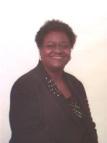|
Three African-American Methodist Churches were formed before the Civil War. They were African Methodist Episcopal Church, African Methodist Episcopal Zion Church and Union American Methodist Episcopal Church. All three churches were formed within the first twenty-one years after the formation of Methodist Episcopal Church. They were also formed within the forty-five years preceding 1832 when the “crusade” for Christian Perfection in the Methodist Episcopal Church began.
African Methodist Episcopal Church was the first African-American Methodist Church formed in the United States. It was organized in 1787, after an episode of racial discrimination at St. George Methodist Episcopal Church in Philadelphia, Pennsylvania.1 “In keeping with William Penn’s tradition of religious and racial toleration”, African-Americans were allowed to worship at St. George Methodist Church. However, African-American “services were held separately at five in the morning”.
Richard Allen, an African-American Methodist preacher was licensed to preach at St. George Methodist Church in 1784.2 He preached in the 5:00 AM worship service.3 It is believed Allen and Harry Hosier, another African-American Methodist preacher, attended the Baltimore Christmas Conference of 1784.4
One Sabbath morning in 1787, while Absalom Jones and William White, two African-Americans were praying in the church5, “they were asked to use only a balcony as a prayer area”. “A row ensued”.6 Allen, who was also praying, “heard considerable scuffling and low-talking”. “As he raised his head, he saw the trustees pulling” Jones and White “off their knees telling them…they could not kneel there”.
As a result of this incident, African-Americans, led by Allen and Jones left the church. Jones founded African Protestant Episcopal Church. Allen, Jones, William Gray and William Wilcher “were appointed to find a lot to build a church” for “worship of God…[that would be] carried on without interference”. Allen purchased a lot located “on Sixth Street near Lombard, in Philadelphia”. The lot “is the oldest parcel of real estate” in the United States “owned continuously by” African-Americans.7
Bethel Chapel was built [on this lot] with the aid of Bishop William White of Protestant Episcopal Church. Bishop Francis Asbury, of Methodist Episcopal Church, dedicated the chapel in July 1794 and ordained Allen. John Dickins, pastor of St. George Methodist Episcopal Church also attended the dedicatory service. Dickins “sang and prayed that the house be called ‘Bethel’ for the gathering in of thousands of souls”.
The church was formally organized in 1816. Allen was also consecrated to the office of bishop during the same year. Asbury performed the consecration.8 Asbury died in March 1816.9
During the years before the Civil War, the church was mostly confined to northern States. After the Civil War, the church’s membership grew in the South. From its inception, the church “provided social, educational and journalistic services”.10
African Methodist Episcopal Zion Church was the second African-American Methodist Church formed in the United States. It came into existence in 1796 after African-American members of John Street Methodist Episcopal Church of New York City protested [against racial] discrimination. James Varick led the dissention from the church.11 John Street Methodist Church had been established in 1769 on the heels of Philip Embury’s preaching and forming of Methodist Societies.12
In 1800, following their dissention from John Street Church, these African-American Methodists built an edifice. The church they formed was named Zion. Later the word Zion was added to the denominational name.13 For many years Caucasian-American ministers of Methodist Episcopal Church served the church.14
In 1821, the church’s first annual conference was held. William Phoebus, a Methodist Episcopal Church minister, presided over the conference. Nineteen African-American preachers representing six African-American Methodist churches attended the conference. The six churches represented were located in Connecticut, Pennsylvania and New Jersey.
James Varick was “elected the first bishop”. The denominational name was “approved” in 1848. [After its inception], the church spread rapidly over the northern states. By 1880, it had “15 annual conferences in the South”.15
Union American Methodist Episcopal Church was the third African-American Methodist Church formed in the United States. It was organized in 1805, after African-Americans left Asbury Methodist Episcopal Church of Wilmington, Delaware. The dissenting group worshiped outdoors and in homes until 1813. In that year, they built an edifice and incorporated as Union Church of Africans. A defecting group from this body formed African Union Church. The defecting group [later] “forced the change to the present name”.16
| 
